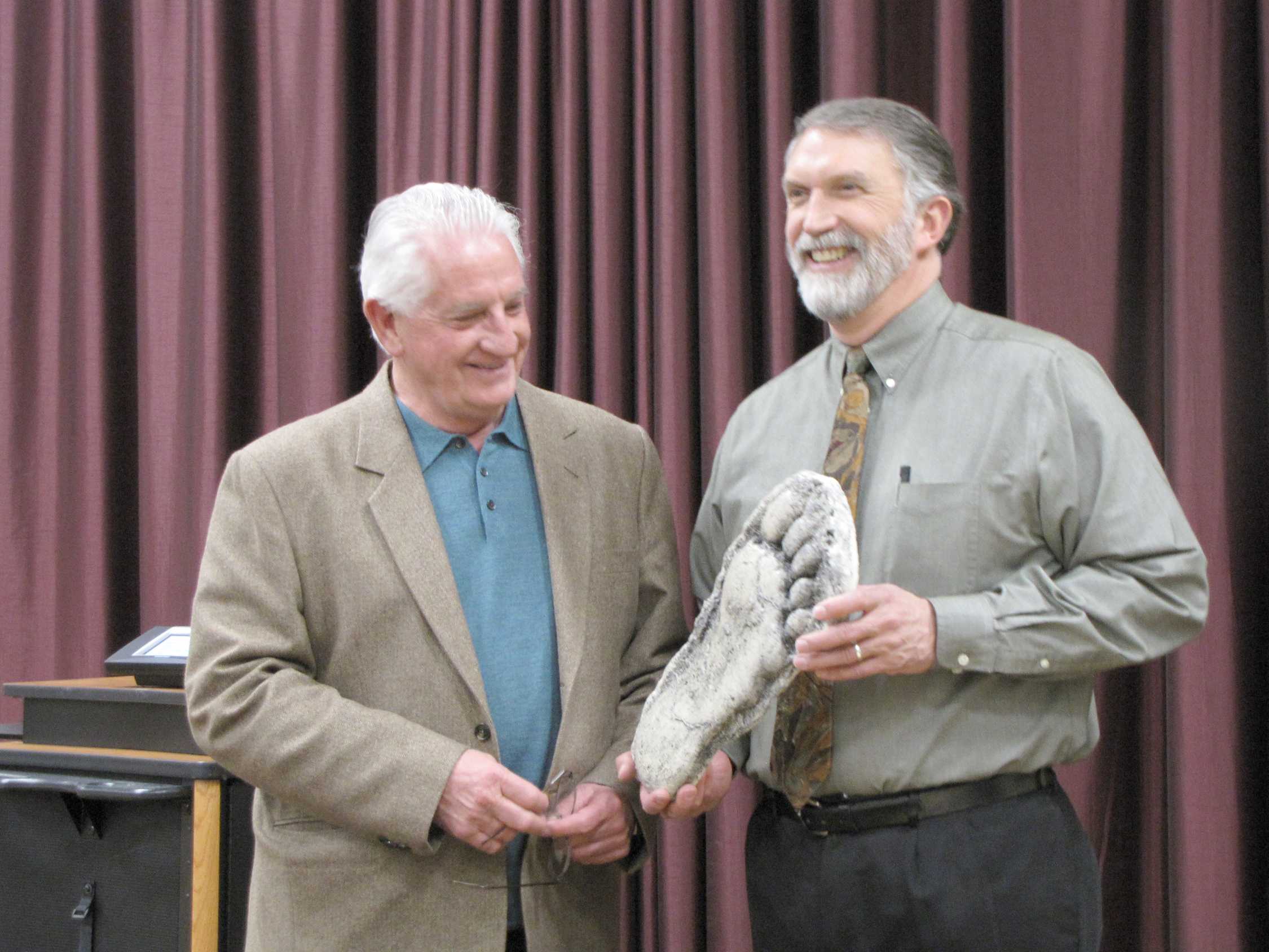
When the Bigfoot movie “Harry and the Hendersons” came out in 1987, Jeffrey Meldrum, associate professor of anatomy and anthropology at Idaho State University, was more than five years through his college education. He was well on his way to learning all he could to prove Bigfoot’s existence through scientific evidence.
Throughout the 20th century, thousands of eyewitnesses have reported sightings of giant, bipedal apes commonly referred to as Bigfoot or Sasquatch — an animal thought to have similar human-like characteristics.
“Opinions vary to the nature,” Meldrum said. “Some suggest that it is a nearly human like creature. Others have suggested that it is a large ape — a distance relative of the ape or orangutan. I tend to be more in the latter. I see behaviors and anatomy that reflects its ape-like quality.”
On Jan. 27, Meldrum spoke to a crowd of more than 100 students, faculty and citizens from the community who gathered in the Hoosier Room to get the facts about the existence of this animal.
Meldrum got his doctorate in physical anthropology from Stony Brook State University in New York in 1989.
Meldrum began with a short introduction about his discussion, and then jumped in on what he and others have found in their studies of the biological evidence of Bigfoot. The evidence ranges from trace elements like footprints to the physical elements including animal feces and hair.
“There is photographic evidence, as well,” he said. “It can be controversial, but the other evidence we measure and look at
objectively.”
Meldrum showed pictures of casts of what is believed to be a footprint of a Bigfoot-type animal made by him and other professional biologists in this area from the past three decades.
“They are casts of footprints that are attributed to Sasquatch,” he said. “It’s up to me to ascertain if they are hoaxed — misidentified as other animals.”
A presentation by Roger Patterson convinced Meldrum of Bigfoot’s existence.
Patterson, a rodeo rider, developed a curiosity about Bigfoot in the 1960s and captured a famous 60-second clip of the creature. Patterson came to speak in the town Meldrum grew up in, and he and his brother convinced their father to take them.
Meldrum got to meet the filmmaker after the presentation, and it was at this young age he realized his fascination with this creature.
“That certainly was the turning point for me,” Meldrum said. “We had talked about in school. I was only in fifth grade but was already fascinated.”
One of the first things Meldrum discussed was the importance of myths in history, as well as in certain celebrations, including a Middle Eastern tradition of keeping track of specific animals whose meat, when ingested, aids in relieving jaundice.
“No history is without myth, and no myth is without history,” Meldrum said.
He also talked about “Zerleg Knoon,” another man-like creature better known as the Abominable Snowman.
Meldrum’s study about fossils or sightings of such creatures included a discussion about bipedal human ancestors like the 1959 discovery of “Zinj” by Mary Leakey. The importance of this fossil was the almost complete cranium of an adult male. It was her husband, Louis Leakey, who suggested that “Zinj” was a distinctive sort of early human ancestor.
Cory Dixon and Marc Lewis, chemistry freshmen, attended the lecture and said they both agreed it was worth the time to hear about it.
“Sasquatch just sounds cool,” Dixon said.
Although Meldrum was supposed to have completed a project in Nepal, India, before his discussion, politics kept him from staying to finish the excursion with National Georgraphic.
“National Geographic is producing a documentary with an unfinalized title, questioning the Yeti and the Sasquatch, or the ‘mande burung’ in India,” Meldrum said. “Its description is very similar to the Bigfoot. Since we weren’t able to stay in India, we went instead to my lab and started there. [We] met with some Native Americans, learned about their lore and looked at some of the evidence that has come out of that region, including some footprints that were brought to our attention. They had discovered large 15-inch tracks.”
More recently, Meldrum was involved in a documentary production with other scientists to discuss findings.
“We did some experiments with search-and-rescue dogs with some distinct scat we had found,” Meldrum said. “It elicited an interesting reaction from the dogs. They reacted with a fear response.”
One man in the audience wanted to know why no one has ever come forward with more than one sighting.
Ben Schneider, a 1996 IUS alumnus, asked about how the Bigfoot freezer hoax affected studies where real evidence had been found. Meldrum said it made a mockery of their efforts.
When asked about his personal beliefs, he said if he had doubts, his career would have been different.
“Of course I’m personally convinced,” he said. “I think what were looking at is many branches of hominids. Rather than assuming they all went extinct some persistent branches exist today in remote areas.”
By JENNIFER
SCHONSCHACK
Staff
jschonsc@ius.edu






